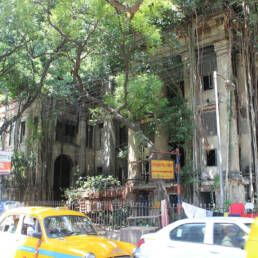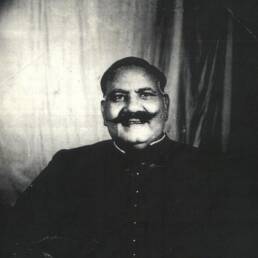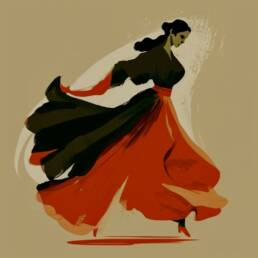Records from the 1857 War of Independence mention a notorious English soldier bearing a rather odd nickname – ‘Bashi.’ Where have we heard that name before? Think Tintin. Think Captain Haddock’s curses. What if we told you it’s also linked to Ottoman warriors? Let us explain.
In 1903, the New York Times ran a few articles on a group of soldiers terrorizing the Balkans.
Atrocities in Macedonia: Bashi-Bazouks Celebrate a Carnival of Vengeance – Dated May 16, 1903.
Bashi-Bazouks Spread Terror in Bulgaria – Dated July 1, 1903.
Such was the terror associated with this group that when Carl Haag (the Bavarian-born painter) visited Cairo along with his friend, British artist Frederick Goodall, they armed themselves with pistols in case they ran into these notorious bandits!
But hang on. Haven’t we heard the term “Bashi-bazouk” somewhere else too?
Spot on! If you’re a fan of Tintin (the Belgian reporter created by the legendary cartoonist Hergé), you would have come across Captain Haddock using the same word as a furious interjection during fits of rage.

In “Prisoners of the Sun,” Haddock can be seen running down a hill, yelling at the top of his lungs-
Patagonians!…
Bashi-bazouks!…
Carpet-sellers!…
Kleptomaniacs!..
These hilarious “insults” were meant for a group of natives who had kidnapped Zorrino, his guide. While the Captain’s words were often not taken seriously, some of his rants carried deep cultural connotations- like the “Bashi-bazouk.”
So what or who is a “Bashi-bazouk?” The word literally means ‘damaged head’ and was mostly used to describe an irregular band of soldiers employed by the Ottoman Empire during the tail end of their rule.
For the most part, these irregular troops were not directly under the payroll of the Sultan and lived mostly off loot and plunder. It’s not exactly known when the Bashi-bazouks were formed, but they were of crucial significance during the mid-19th century.
Known for their brutality, these soldiers would litter battlefields with bodies and set villages ablaze, leaving behind a trail of destruction wherever they went. One of the leaders from this group notably found his way to the Indian subcontinent.
Delhi, 1857. The 9th Lancers, a cavalry regiment of the British Army, found itself locked in a pitchfork battle with the defenders of Delhi. Fighting amongst them was a man called John Evans – known mostly by his nickname “Bashi.”
Evans was born in Derbyshire in 1828 to a family of bankers and industrialists who had made money during the industrial era. Evans, however, built himself for a different life altogether.
Around the age of 27, he volunteered to serve on the personal staff of Major-General Sir W. Fenwick Williams during the last phase of the Crimean War. He was sent to Turkey where he learned the language and quickly asserted his skill and authority.
Due to his proficiency in the local language, he was given command of a group of irregular soldiers – the infamous Bashi-bazouks. He and his band of irregulars then ran a couple of successful guerrilla campaigns against the Russians.
For his valiant efforts, Evans was nicknamed ‘Bashi,’ linking him to the ruthless Ottoman warriors!
In the Indian subcontinent, Evans, armed with his hog spear, played a crucial role in recapturing Delhi from the rebel forces. Evans (very much living up to his nickname at this point), would also play a significant role in the second relief of Lucknow and the Battle of Cawnpore, earning him notoriety among rebel forces.
In a tribute after his death, one of his fellow officers said:
“He was a man who at Kars, at Delhi, and during the whole Indian Mutiny, was notorious for the possession of the most undaunted courage…”
The Bashi-bazouks, on the other hand, were mostly disbanded at the end of the 19th century, though it is rumored they were still used in small numbers as and when required.
While Captain Haddock’s comical tirades always raise a laugh, their sometimes deeper undertones can leave us with a nugget of history long forgotten.
Let us know about your favorite Captain Haddock rant and whether it carries any hidden meaning/references.
Sources:
THE ROMANTIC BACKSTORY OF THE ‘SOLDIERS OF ORNAMENT’: BASHI-BAZOUKS IN ORIENTALIST ART BY HARRY EDMONDS, MAR 20, 2020, https://www.sothebys.com/en/articles/the-romantic-backstory-of-the-soldiers-of-ornament;
https://www.spink.com/lot/20003000327




